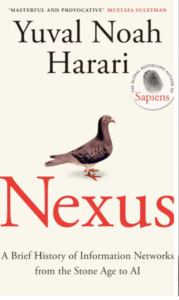The following paragraph is from The Billion Dollar Brain by Len Deighton, published in 1966 (almost 60 years ago).
“I don’t want to bore you,” Harvey said, “but you should understand that these heaps of wire can practically think— linear programming-which means that instead of going through all the alternatives they have a hunch which is the right one. What’s more, almost none of them work by binary notation-the normal method for computers-because that’s just yes/ no stuff. (If you can only store yesses and noes it takes seven punch holes to record the number ninety-nine.) These machines use tiny chips of ceramic which store electricity. They store any amount from one to nine. That’s why-for what it does—this whole setup is so small.”
ChatGPT: This paragraph is a remarkable little time capsule. In 1966, when The Billion Dollar Brain came out, the general public had only the vaguest idea of what computers actually were, let alone what they could do (see comment below). And yet here, Len Deighton—writing a spy thriller, not a science text—manages to tap into several ideas that were way ahead of their time: Continue reading

 The photo above (my mom and Aunt Marie) was probably taken sometime in the mid-1940s on the family farm near Broseley, Missouri. I’ve seen this photo countless times but not sure I’ve noticed the camera in my aunt’s hand. A little history from ChatGPT:
The photo above (my mom and Aunt Marie) was probably taken sometime in the mid-1940s on the family farm near Broseley, Missouri. I’ve seen this photo countless times but not sure I’ve noticed the camera in my aunt’s hand. A little history from ChatGPT: I have read and enjoyed each of Yuval Noah Harari’s previous books.
I have read and enjoyed each of Yuval Noah Harari’s previous books.